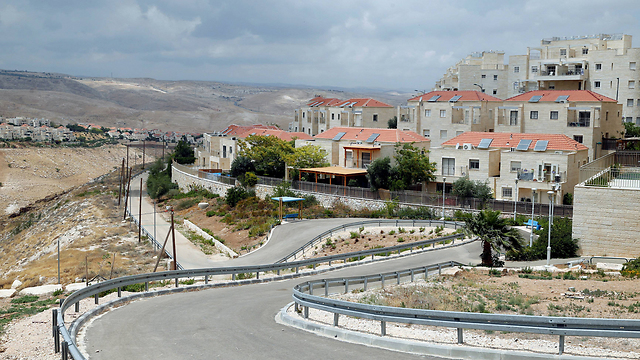Op-ed: West Bank settlements continually receive budget items, monetary diversions, and transfers of funds; their pupils receive more money than other Israelis, and their hand remains outstretched; how much are the settlements actually costing us?
Seventy-two million shekels that were authorized this week by the Knesset’s Finance Committee for the settlements are but a mere slice of the inferior salami that public leaders have been feeding us. From the current Knesset’s entry, the settlements have been on the receiving end of 340 million shekels (in addition to budget items), and their hand is still open for more.
The previous round of financing—December 2015—ended with a grant of 32 million shekels and a metaphorical expectoration. The committee’s chairman, Moshe Gafni, then said, “I spit on this allocation, which is the doing of greedy thieves,” before raising his hand and voting for it.
A half year has passed since then, and even the biennial budget that was approved with a majority in the Knesset has not succeeded in stopping the flow of funds to the settlements, but this time there wasn’t even anybody to turn their nose up.
The secret operation order was distributed to government ministers last Thursday night, presenting the details of the decision-makers’ proposal: “Assistance to the settlements in dealing with the consequences of the current wave of terror,” ensured that they would show up ready for the vote on Sunday.
The operation, of course, was a success, and representatives of the leadership explained to the masses that “after years of attempts, we can, for the first time, compare the conditions in the Judea and Samaria to those in the rest of the country and support the allocation of a budget for erecting hotels in principal tourism centers,” said Minister of Tourism Yariv Levin.

Minister of Welfare and Social Services Haim Katz said “It is our duty to take care of the communities that are at the forefront of the war on terrorism and deal bravely with complex security and societal challenges,” while Minister of Culture and Sport Miri Regev promised that this year would, “see many more sports facilities and rich cultural events throughout Judea and Samaria.”
That’s how it goes when it’s a “decision-makers’ proposal”: It always passes. The decision-maker prevails. And what happens when the decision-maker doesn’t prevail, you ask? What happens when things get to the Finance Committee and are put there to a vote? It’s good that you ask. One of the members of the committee told me this week that nobody really knows at what stage of the salami we’re at. Committee members are called to votes whenever it’s necessary to “divert” or “transfer” funds from one budget item to another.
According to the data released, in 2014, the Finance Committee approved unprecedented diversions in the state budget of 55.7 billion shekels. Now track your tax money and try to find out how much if it is funneled into the West Bank. The budget in itself is a hodge-podge result of coalition conflicts. The crises and claims from various parties have become, in recent years, almost a misrepresentation, since large parts of the budgets are diverted and transferred through hijacked votes that simulate democracy in action but that are actually actors filling key roles from a written and known script.
It is worth reminding that the last underhanded opportunism displayed by the previous government, hours before its dissolution in December 8, 2014, was the approval of the transfer of funds that included 120 million shekels for the settlements. A year later, hundreds of millions that had been transferred to the Settlement Division from the surplus in Netanyahu’s pocket was retroactively approved.
Sure, it’s impossible for us mere mortals to know how much of our monthly salary in recent years is used for the consolidation and proliferation of settlements in the West Bank and for the commemoration of settler ideology. However, data published this week by Molad, the Center for the Renewal of Israeli Democracy, indicates that in 2015, the state invested, for each pupil in the territories, twice that which it did for their counterparts in the periphery. A resident of a settlement received 28% more than did a resident of the Galilee, and twice the amount the government expends on a resident of the Central Region.
It turns out, then, that even when you don’t see the money, you can track it and see what it’s doing to us. It may be possible to deceive the public, throw numbers in the air and perform tricks with the budget, but it’s no longer possible to deny the social price paid by every Israeli in the age ruled by the settlers.
As reported by Ynetnews
